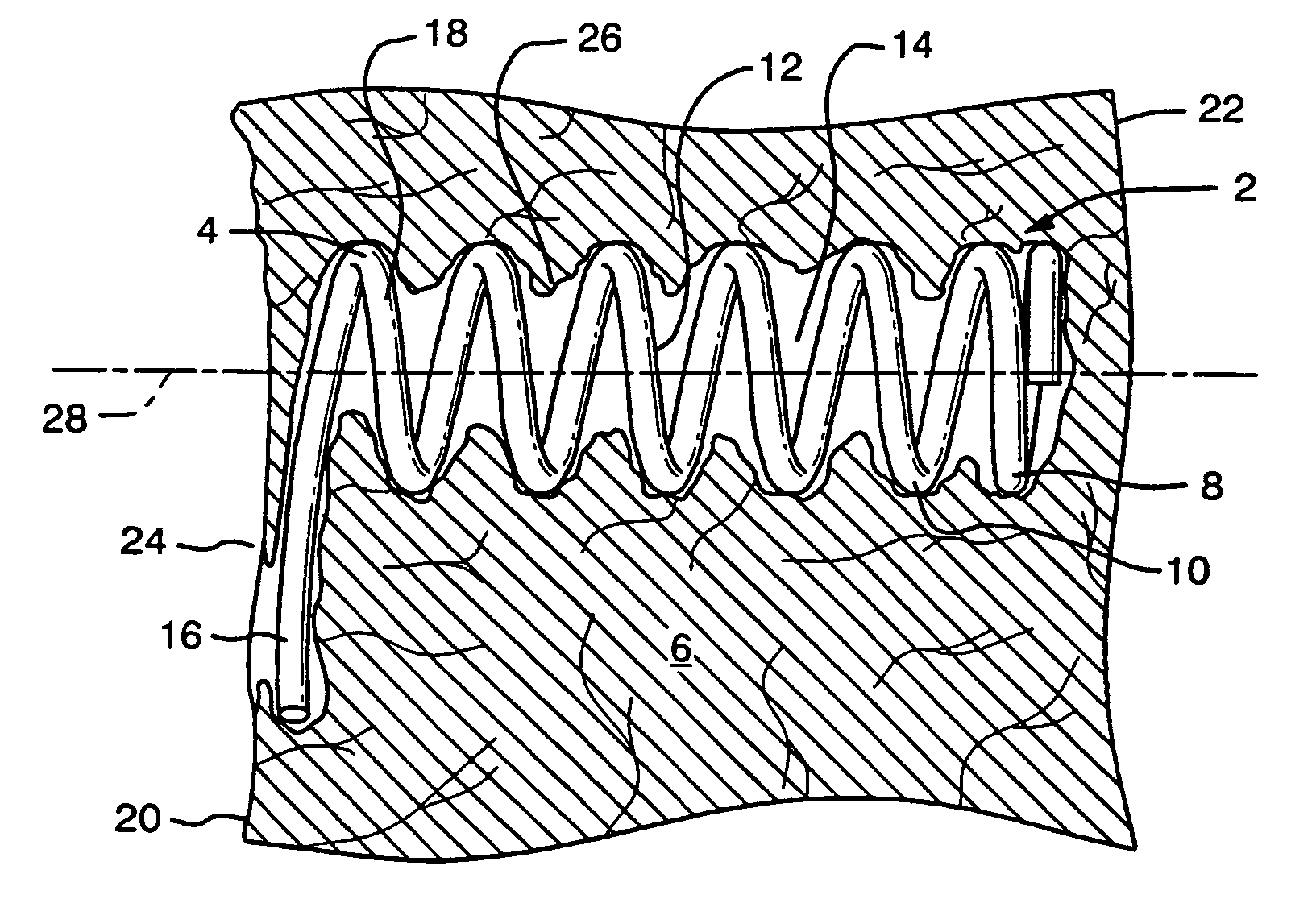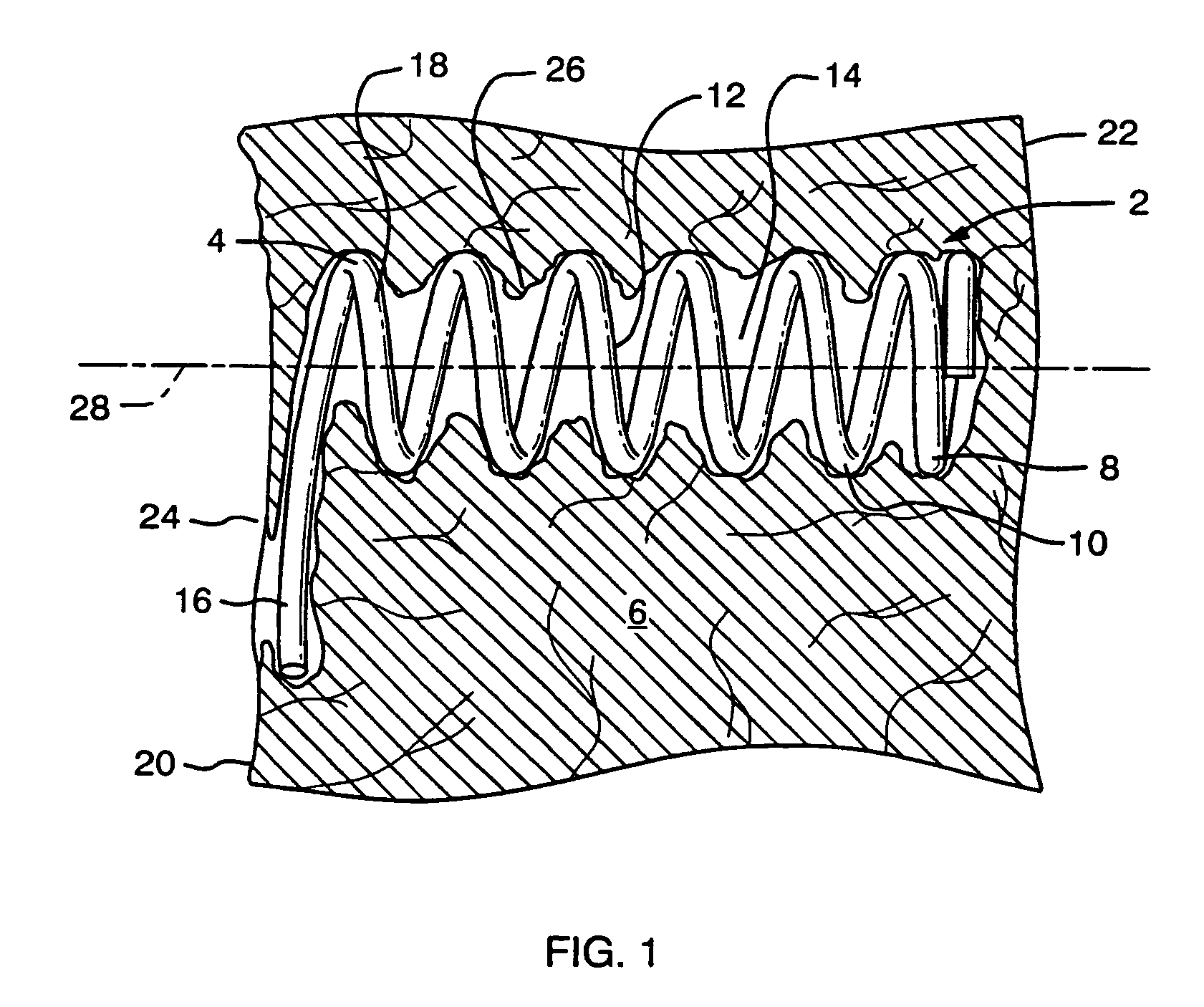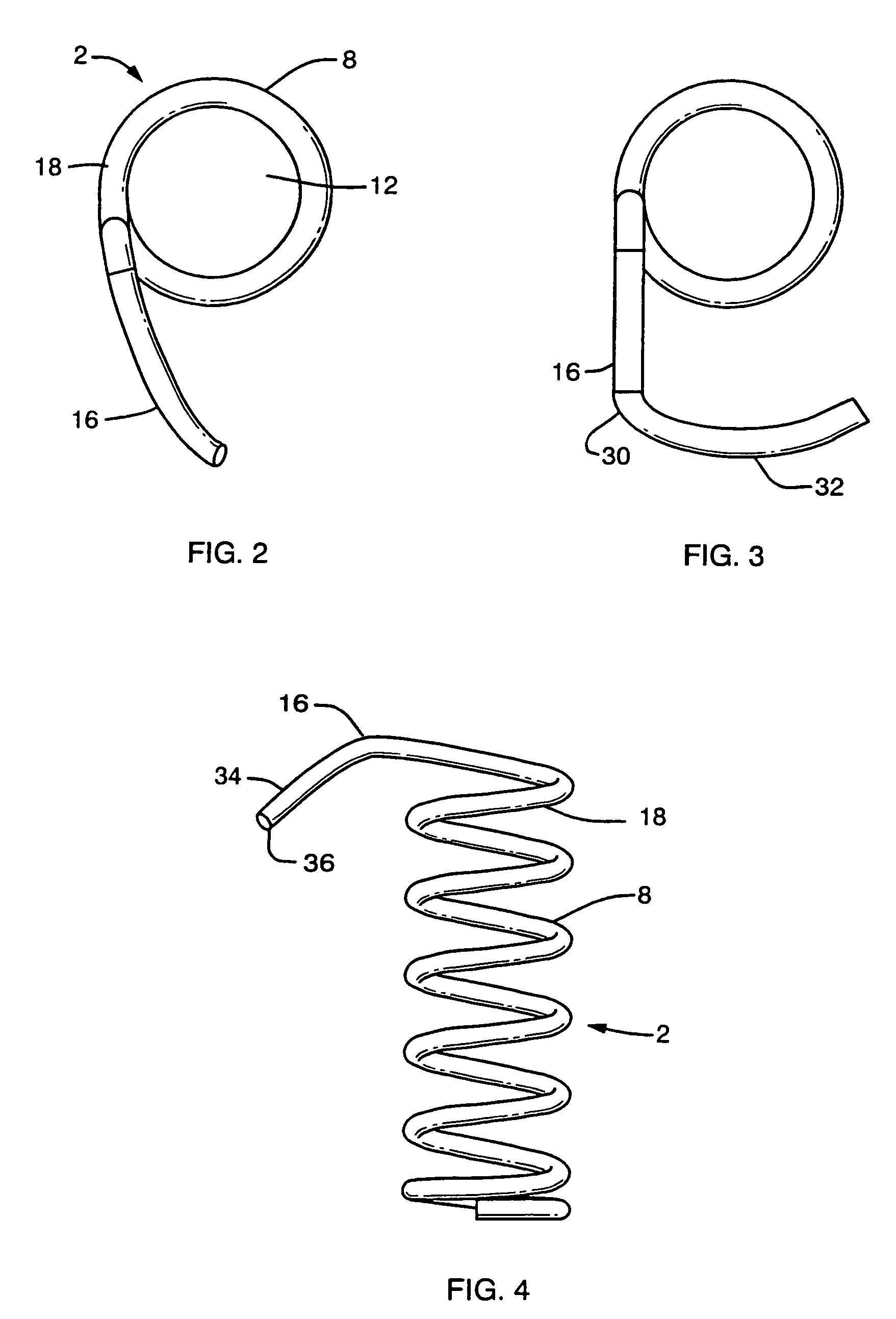Implant anchor systems
a technology of implanted devices and anchor systems, which is applied in the field of tissue implant devices, can solve the problems of ejecting devices from tissue, ejecting devices could be harmful to patients, and conventional methods of anchoring devices to tissue such as stapling or suturing prove difficult, so as to improve the anchoring capability, resist migration, and resist the effect of migration
- Summary
- Abstract
- Description
- Claims
- Application Information
AI Technical Summary
Benefits of technology
Problems solved by technology
Method used
Image
Examples
Embodiment Construction
[0043]FIG. 1 shows a partial sectional side view of a preferred embodiment of an implant device configured for improved anchoring. The implant device 4 comprises a helical spring body 8 formed of a plurality of individual coils 10. The helical spring body 8 defines an interior 12 which maintains an open cavity 14 within the tissue 6 when the device is implanted. The anchor mechanism comprises a laterally extending arm, which extends from the most proximal coil 18 of the spring body 8 to define a lateral extent away from the longitudinal axis 28 of the device that is greater than the overall diameter of the coil body 8.
[0044]The implant device is particularly useful in treating ischemic tissue such as that often occurs in a myocardium of the heart. As shown in FIG. 1 the implant device may be inserted into the tissue 6, such as that of the myocardium, through the epicardial surface 20 at entry site 24 such that the device extends the majority of the thickness of the myocardium toward...
PUM
 Login to View More
Login to View More Abstract
Description
Claims
Application Information
 Login to View More
Login to View More - R&D
- Intellectual Property
- Life Sciences
- Materials
- Tech Scout
- Unparalleled Data Quality
- Higher Quality Content
- 60% Fewer Hallucinations
Browse by: Latest US Patents, China's latest patents, Technical Efficacy Thesaurus, Application Domain, Technology Topic, Popular Technical Reports.
© 2025 PatSnap. All rights reserved.Legal|Privacy policy|Modern Slavery Act Transparency Statement|Sitemap|About US| Contact US: help@patsnap.com



